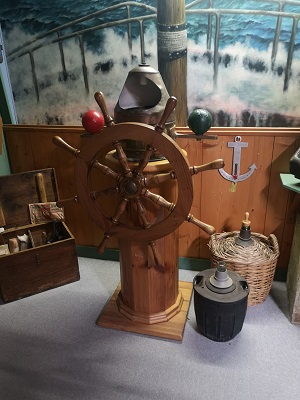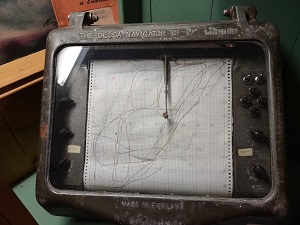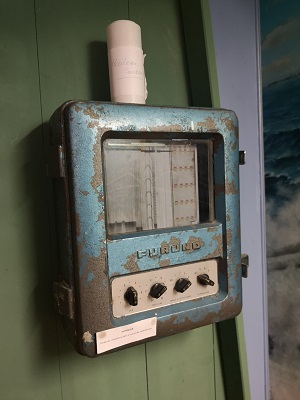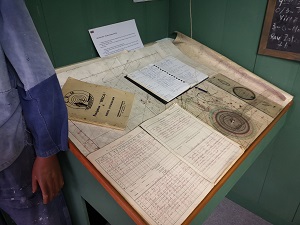
The Bridge of a Ship
The skipper of the trawler is in charge of the vessel. It is he who decides on the area in which he will fish.
The various devices present on the bridge of a trawler play an important role in both navigation and the search for fish. The skippers had at their disposal the latest technology and increasingly efficient means of communication.
Stumbling in the middle of the walkway, the wheel, as well as the compass (compass).

The ship's compass is a marine compass. Don't tell a sailor that his or her boat is equipped with a compass, or you will be reprimanded. Since its invention and the use of nautical charts, the navigation compass has been used to determine the direction of the boat in relation to magnetic north. Thanks to its graduations, it allows you to keep a constant course, and to follow a maritime route. Ship's compasses consist of a graduated rose, containing a liquid and the magnetic needle of the compass, and a fixed part which contains the index to keep the course. They are framed by metal balls to compensate for the magnetism caused by the metal parts of the ship..
On your right the ship's metalworkbrowser DECCA

The DECCA system was a hyperbolic LF (70 to 127 kHz) radio navigation system. It was developed during the Second World War by the Allies to enable accurate landings. Its main use was for coastal navigation. It was widely used by fishermen after the war, as well as in aviation. The system was deployed in the Channel and the North Sea. It was discontinued in the spring of 2000, having been overtaken in performance by GPS.
On your left a sounder branded Furuno.

The sounder emits sound pulses into the water. When these pulses encounter an object such as fish, vegetation or the bottom, they are reflected back to the surface. The sounder measures how long it takes for the sound wave to travel downwards, encounter an object and then bounce back upwards. This is the same echolocation system that bats and dolphins use. This information allows the sounder to estimate the depth of the object from which the sound waves were reflected. It also measures the strength of the returned pulse: the harder the objects, the stronger the returned pulse.
On your left a Table with marine card

Dry point compasses, protractors and rulers are used to plot a course on a chart, which is then entered in the logbook. In the absence of GPS or multi-function displays, these chart table accessories are the best way to set a course safely.
When a trawler is at sea, the seafarers on board take it in turns to take over the navigation watches. In accordance with international maritime regulations, there is always a human presence on the bridge, day and night, to ensure a permanent visual and auditory watch.